2019 Lexus ES 350 Review

ES is probably the most quintessentially Lexus model in this Japanese automaker’s lineup.
A cornerstone product since it launched alongside the LS flagship four-door back in 1989, it’s always been a paragon of smoothness, comfort, and quality; virtues that form the bedrock of Lexus’ long-term success.
And even though Toyota’s luxury division is actively trying to distance itself from these arguably less-than-thrilling qualities by pushing bolder design and entering new vehicle segments, there will always be a market for cars that prioritize refinement, luxury and bulletproof dependability over flash-in-the-pan gimmicks and high-fashion design.
All new for 2019, the seventh-generation ES sedan continues to pamper well-heeled passengers as it always has, but it does so with more pizzazz and emotional appeal than ever before.
Square One
Undergirded by the brand’s Global Architecture K structure (GA-K in Lexus shorthand), a derivative of the widely used TNGA toolkit, ES shares numerous components and a few important dimensions with the Toyota Avalon. Compared to its predecessor, this car is 2.6 inches (6.6 cm) longer overall, a whisker lower, nearly 2 inches wider (4.6 cm) with a wheelbase that’s been stretched by 2 inches (5.1 cm). These changes make it more spacious and comfortable but also better to drive. Curiously, the ES’s overall length and wheelbase are identical to its blue-collar sibling.
FAST FACTS
| Engine: | 3.5-liter V6 |
| Output: | 302 horsepower, 267 foot-pounds of torque |
| Transmission: | Eight-speed automatic |
| U.S. Estimated Fuel Economy (MPG): | 22 city, 33 highway, 26 combined |
| CAN Fuel Economy (L/100 km): | Not Yet Rated |
| U.S. Estimated Base Price: | $40,000 |
| CAN Estimated Base Price: | $50,000 |
Perusing the range, the ES 350 is the mainstream, gasoline-powered version and will account for the overwhelming majority of sales. As before, a hybrid variant will also be offered, the ES 300h, which is estimated to account for around 15 percent of deliveries, give or take. Brand new for ‘19 is a fashion-forward F Sport version, which brings new features and design to this stalwart nameplate. These models are expected to account for around 25 percent of all deliveries.
ALSO SEE: Where is Lexus Made?
Broadening its appeal, the ES is going global. For the new model year, it’ll be sold in more than 90 markets around the world, a radical departure from the previous six generations, which were only offered in North America.
Two powertrains will be available in this latest Lexus. Mainline and F Sport versions brandish a 3.5-liter gasoline V6 that’s rated at 302 horsepower and 267 pound-feet of peak torque. It comes exclusively with an eight-speed automatic transmission that routes twist to the front wheels. Aside from gaining 34 horsepower and 19 torques, this drivetrain is more economical than ever. Fuel economy is estimated at 22 miles per gallon in the city and 33 on highway drives, scores that result in a combined rating of 26 MPG.
For drivers that demand even more efficiency, a hybrid variant will once again be available. ES 300h versions feature a 2.5-liter four-cylinder engine that’s aided by a pair of motor-generators and a nickel-metal hydride battery pack. This miserly dream team delivers a total system output of 215 horsepower with combined fuel economy estimated at 44 miles per gallon, the best of any plug-less luxury vehicle on the market today.
A Coddlin’ Cockpit
Bystanders are sure to notice the ES’s bold new exterior design, which is dominated by an unmistakable spindle grille positioned front and center, a motif that’s mirrored on the car’s back end. Further enhancing its curb appeal, the hood has been lowered and A-pillars pushed rearward, providing a sportier stance.
But really, it’s what’s inside that counts and the ES does not disappoint. The cabin is richly appointed with scads of squishy-soft plastics and creamy-smooth leather. The design is both futuristic and elegant, with flowing lines and swooping surfaces along with no-nonsense controls and friendly sightlines.
One of the cockpit’s more interesting elements are the pair of stubby knobs that sprout from the meter-cluster hood like the horns of a juvenile goat; they also bring to mind the interior of an early ‘90s Chevrolet Corsica, but I digress. Moving with well-oiled fluidity, one enables or disables the stability-control system while the other rifles through the car’s various driving modes.
SEE ALSO: 2019 Toyota Avalon Review
Taking center stage in higher-end ES 350s is a gigantic 12.3-inch display. Crisp and clear, it’s home to the optional infotainment system with embedded navigation. Manipulated by a laptop-like trackpad on the center console, it’s relatively easy to use, though further simplifying things Apple CarPlay is also baked in so drivers can pick their infotainment poison. This smartphone-connectivity feature is also coming to the standard Lexus Multimedia System after October 1.
If you plan on using the new ES to haul passengers, you’ll be pleased to know it still excels at this. Backseat space is generous for both knees and shoulders, though at six-feet tall the peak of my coiffure barely brushed the headliner when I sat up straight. Taller riders should have no issues getting comfy in this sedan.
Trunk space is likewise generous, clocking in at just shy of 17 cubic feet (473 liters). Additionally, it can now be opened with a kick of your leg under the rear bumper, an immensely helpful feature when your hands are full.
But How Does it Drive?
As one would expect from a Lexus ES, the 2019 model is smooth and silent, unperturbed by all but the most severe of road imperfections. Despite such a coddling ride it never feels sloppy or loose. The steering system is isolated, filtering out unwanted vibration and harshness while still providing desirable heft and decent road feel; there’s just the right amount of softness to the ES’s handling without it feeling completely numb.
This car’s mainline 302-horsepower 3.5-liter V6 is smooth throughout its rev range, with electronic vacuum-controlled engine mounts suppressing vibration at idle. However, even with 267 pound-feet of maximum torque, the ES doesn’t feel quite as quick as it should. Acceleration is more than adequate with this bulky sedan hitting 60 miles an hour from a dead stop in a claimed 6.6 seconds, but in real-world use, it feels less responsive.
While slick both up and down, the standard eight-speed automatic transmission doesn’t seem to help this car sprint. It’s reluctant to drop gears when you floor the accelerator or shift it yourself. Apparently, Toyota engineers are terrified of letting their engines go anywhere near redline, which, oddly enough, has been increased to 6,600 rpm for 2019. If you try to downshift the ES it won’t drop a gear if the revs would top roughly 4,000, which is, frankly, ridiculous.
But there’s more undesirable transmission behavior worth mentioning. In manual mode it has a mind of its own, upshifting whenever it fancies and ignoring commands from the paddle shifters or gear selector. It simply won’t allow you to control shifts yourself, even in supposedly athletic F Sport models.
The F Sport gets a few more changes, including differentiated exterior styling, a mesh-textured grille and unique paint colors; a few interior changes with new (and more comfortable) front seats; and the addition of Adaptive Variable Suspension, which includes adjustable dampers. However, these cars hardly feel any different from standard models. Switching between the F Sport’s various drive modes I couldn’t feel any ride-quality or performance difference between them, which is just as disappointing as in the 2019 Avalon.
After briefly sampling the hybrid ES 300h, I found it a little noisy, with four-cylinder gruffness making itself heard under heavy loads. Don’t fret though, it’s still a paragon of smoothness and efficiency. When it comes to skipping the gas pump you won’t be disappointed with this model.
The Verdict: 2019 Lexus ES Review
The 2019 ES 350 is just the right kind of Lexus. Refined and comfortable, it’s incredibly easy to live with, likely ironing out life’s wrinkles as well as it smothers bumps in the road. Oddly enough, I much preferred it to the equally new Toyota Avalon I tested a couple months before because it feels like a much-more-cohesive package.
Pricing for this fresh-faced Lexus has not been announced, but we’ve been told it will be very similar to the current model, which starts at right around $40,000 in the U.S. Look for it at dealerships this September.
Discuss this story on our Lexus Forum
LOVE IT
- Roomy in all the right ways
- Smooth powertrain
- Comfortable ride
- Premium cabin
- Stable handling
LEAVE IT
- Doesn’t feel 302-horsepower fast
- Recalcitrant manual shifting
- F Sport model adds little

Born and raised in metro Detroit, Craig was steeped in mechanics from childhood. He feels as much at home with a wrench or welding gun in his hand as he does behind the wheel or in front of a camera. Putting his Bachelor's Degree in Journalism to good use, he's always pumping out videos, reviews, and features for AutoGuide.com. When the workday is over, he can be found out driving his fully restored 1936 Ford V8 sedan. Craig has covered the automotive industry full time for more than 10 years and is a member of the Automotive Press Association (APA) and Midwest Automotive Media Association (MAMA).
More by Craig Cole



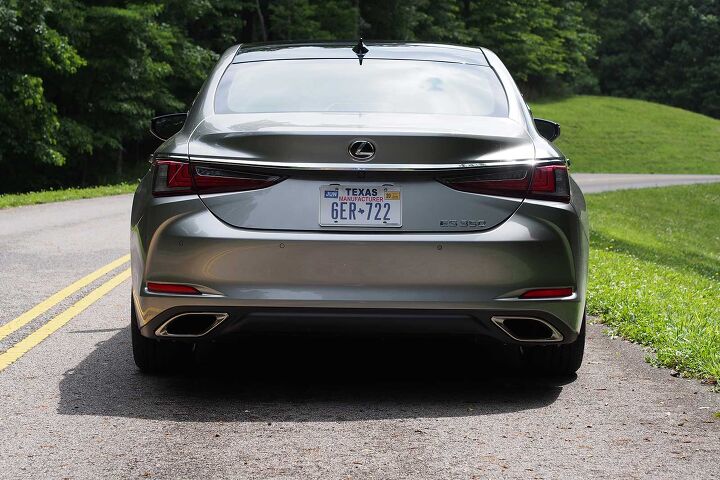
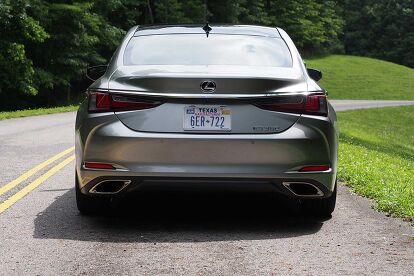









































































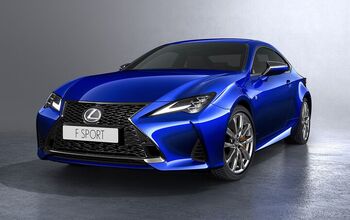


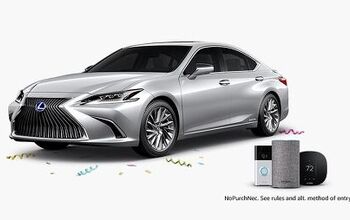

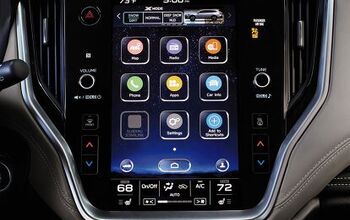








Comments
Join the conversation
No rear heated seat in a luxury car? No AWD either? Lexus sure is cheap!
Much better looking than the Avalon, which looks like a whale shark with that huge grille. This one is better...although I wish they would do away with it. It takes away from a luxury look...kind of juvenile.